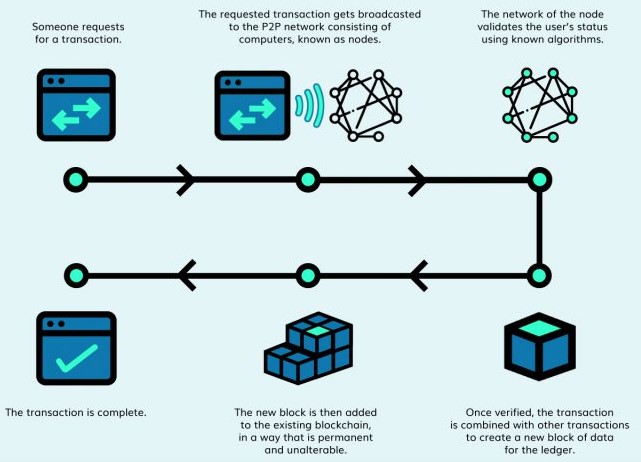Crypto-currencies
2021 SEP 25
Preliminary >
Science and Technology > Digital technology > Innovation and New technologies
Why in news?
- China’s central bank on 23rd September said all financial transactions involving cryptocurrencies are illegal, sounding the death knell for the digital trade in China after a crackdown on the volatile currencies.
What is crypto-currency?
- Cryptocurrency is a digitised asset spread through multiple computers in a shared network.
- The decentralised nature of this network shields them from any control from government regulatory bodies.
- Cryptocurrencies work using a technology called blockchain.
- Blockchain is a system of recording information in a way that makes it difficult or impossible to change, hack, or cheat the system.
- A blockchain is essentially a digital ledger of transactions that is duplicated and distributed across the entire network of computer systems on the blockchain.
- Each block in the chain contains a number of transactions, and every time a new transaction occurs on the blockchain, a record of that transaction is added to every participant’s ledger.
Features of crypto-currencies:
- Features and valuation:
- The prominent feature in the design of cryptocurrencies architecture is decentralized control, which means - no single authority, institution, individual or group controls the flow of transactions, supply or valuation of the currency.
- Rather, the collective computing power of the miners ensures seamless operations while demand-supply dynamics drive the valuation.
- Public ledger:
- A cryptographic algorithm/function encrypts this transaction using the digital signatures of the parties to establish their authenticity. Once validated, the transaction reflects in the public ledger, maintained by so-called miners.
- Mining:
- The process of maintaining this ledger and validating the transactions is better known as mining.
- Authenticity:
- Traditional banking is based on underlying assets and values and primarily the trust on the banking authority of a nation.
- In virtual currencies the authenticity lies on the cryptographic proof of present to historic transactions and also validation by miners.
- The concepts of cryptography and protocols which are based upon the principles of advanced mathematics and computer engineering makes cryptocurrencies secure and hard to duplicate or counterfeit.
- Anonymity:
- The transactions do not reveal the identities of the parties but rather uses their cryptographic signatures to identify them while maintaining their anonymity.
How it works?

Examples of crypto-currencies:
- Bitcoin, first released as open-source software in 2009, is the first decentralized cryptocurrency.
- Despite it not being legal tender in most parts of the world, bitcoin is very popular and has triggered the launch of hundreds of other cryptocurrencies, collectively referred to as altcoins.
- Other cryptocurrencies include Ethereum, Litecoin, Cardano, Polkadot, Stellar, Chainlink etc
Regulation in India:
- As of now, cryptocurrency does not have any legal status in India and are unregulated.
- In 2018:
- The RBI in its 2018 order had banned trading of all virtual currencies in India. The order restricted all entities regulated by the RBI not to deal with virtual currencies including maintaining accounts, registering, trading, settling, clearing, giving loans against virtual tokens, accepting them as collateral etc.
- In 2020:
- Supreme Court has struck down this ban on trading of virtual currencies (VC) in India.
- In 2021:
- Recently, the government has announced to introduce a bill; Cryptocurrency and Regulation of Official Digital Currency Bill, 2021, to create a sovereign digital currency and simultaneously ban all private cryptocurrencies.
PRACTICE QUESTION:
Consider the following statements regarding ‘crypto currencies’:
1. They are a form of digital assets based on a network that is distributed across a large number of computers
2. Valuation of the crypto-currency is determined by a central authority.
Which of the statements given above is/are correct?
(a) 1 only
(b) 2 only
(c) Both 1 and 2
(d) Neither 1 nor 2
Answer
